Poetry As Preservation of Slavonian Cultural Heritage and Tradition
31st of March 2022 - Meet Željko Čuljak, whose poetry and stories about the beauty of Slavonia and its residents aim to preserve the cultural heritage and tradition of his village Cerić and the whole Slavonian region.
We spoke with Željko in his home in the small village of Cerić, which is located near Vinkovci and has suffered a tragic fate. During the Homeland War, Cerić fell and was destroyed to the ground - residents lost everything and inevitably fled the enemy aggression which destroyed everything in their way. Željko, with his fellow fighters and villagers, stayed behind and helped to protect Nuštar, a nearby village that resisted tireless enemy attacks and led bloody battles that lasted for days. On the 5th of October in 1991, just a few days after surrounding villages fell to the enemy hands (Cerić and Marinci), Croatian defenders resisted enemy attacks and, in the end, managed to protect the village from aggressors. This event is forever inscribed in the history books of the Homeland War as the “Battle of Nuštar”, which was one of the biggest wins of the Croatian army in an effort to protect the country of Croatia from aggressors. Why is this event mentioned? Because its consequences left a big scar on Cerić and its surroundings - destroyed homes, displacement of the residents, destroyed the most recognizable symbol of the village, the church and so much more. The identity of the village was shattered by those buildings and still has an impact on the village's atmosphere today. However, returnees to the village and new residents made it their mission to bring back the old glory of Cerić, promote how people lived before the war, and show that their tradition, cultural heritage, and their lives were not erased on that fateful day in 1991.
Thus, join us in meeting Željko, who is at forefront of the mini “Slavonian revolution” which is propelled by his stories and poetry about the past and present and the future of Slavonia as well.
Željko, can you tell TCN readers a bit about yourself?
My name is Željko Čuljak, a folk poet and a writer, a defender of the Homeland War and a retiree, who in their free time raises pigeons and writes stories about Cerić and Slavonia. I am a father of three children, a grandfather, and a husband. My writing is connected to the exile of our village, ten years of watching my village from the frontlines. To understand my writing and me in general, you need to see where I live.
What is Cerić? If you look at it as an outsider it seems like any ordinary Slavonian small village, so what is so special about it to you?
We live in Slavonia, a rich and “full” region that through time attracted a lot of conquerors and consequently, misfortunes. People who lived here suffered a lot during a few wars that happened in this region and after those casualties, the number of residents rapidly decreased which led to people all over the country migrating to Cerić. In the beginning, a lot of conflicts occurred between immigrants and the old residents, who felt threatened by the newcomers. However, after some time, harmony and love prevailed and connected these different groups. Love won in the end and those newcomers accepted the village's customs and cultural heritage and traditions of this region. In conclusion, calm people live here.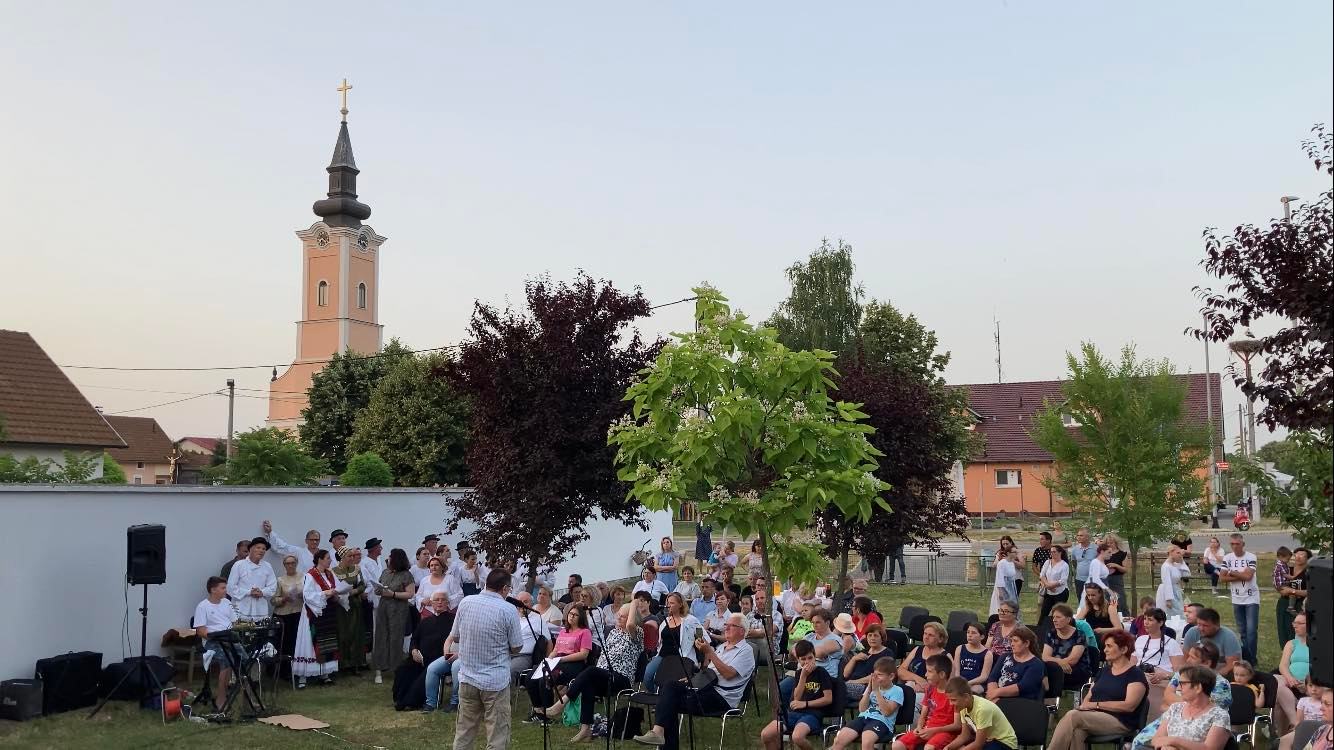
"Evenings with Poetry" in Cerić, (photo credit: Vedran Čuljak)
When did you discover your passion for writing?
I don’t talk much, a lot of the things I prefer keeping to myself and we were taught “if you don’t have anything nice to say, it’s better for you to be quiet.” I endured the war better while I was in it than when I came back to destroyed homes and a neglected village, it fuels the anger in you. That site slowly but surely built up anger and rage in me and I couldn’t express it to others nor me. Then, one time at the mass, I heard a priest talking about anger and saying: “Love your enemies, forgive!” How can I do that?! I realized that I need to forgive myself to let go of that anger. When I’m surrounded by so many good people, how can I be angry?! And those experiences fueled my inspiration for writing. Firstly, I started writing for myself. I write about the beauty and happy adventures of our lives and their residents. I felt sorrowful for not sharing my work with anyone, so I started gifting and selling my work to family and friends. When they liked and praised my work, I felt like I was doing something right. Also, I am part of the Folklore Society of Cerić "Slavko Mađar" and they always need new ideas or “old” ideas I realized that war kind of erased part of our history, people who “disappeared” from this place took the tradition and cultural heritage with them. Today, I’m sort of a keeper of memories in Cerić, one of the people who bring those old stories and memories back to residents and it, unfortunately, seems that people forgot most of them. I try my best to save and preserve that cultural heritage for children of the future. We have a very nice combination of us poets who write and the rest of the village who “absorb” everything we make. We give our poetry soul and actors from Folklore give them life.
Željko, do you think there are enough of these initiatives that have the mission of preserving and promoting Slavonian cultural heritage?
Folklore Societies are keepers of tradition and it’s well represented, not just in our region but throughout all of Croatia. Every village and town have their own Folklore Society. The question is, are people aware of them? Once upon a time, people were actually running away from tradition and it was an embarrassment to even be connected to these groups because everything else foreign was better. Then we realized during War that we miss sitting under the old mulberry tree while the spring sun is shining, harvesting our own crops and so many more things that make this region unique. Simply, all of the residents of Cerić realized that that’s the point - it’s nice to go abroad to a beautiful country or city but in the end, there is no place like home.
Do you have any of your original work published?
I have a collection of poems called Trace of The Soul (Trag Duše) which came out in 2019. It’s mostly poems about the war we experienced, adventures, and traditions Cerić offered and inspired me to write about. I wrote another book of poetry expected to be published near the end of the year, it should’ve been published before but COVID-19 slowed down the process. It’s easy to write for me since there’s a lot of inspiration around me like children going back from school, the boy who’s a head shorter than the girl but still carries her bag, and those kinds of stories make my writing worthwhile. Everything is simple and lively in this village.

Original cover of "Pattern of the Soul" (Trag duše), Željko's published work, (photo credit: Vedran Čuljak)
Who’s your biggest critic?
My wife is my eternal inspiration to me haha AND my biggest critic of course. Everything that works and everything that doesn’t work she always tells me. She knows how to read my poem better than I! I don’t know how to interpret it when I write it! To me, it’s a blessing and brings me a lot of joy when every poem finds its own role, every person finds themselves in my poem, my story. We are extremely lucky that our whole village participates with us.
Can you tell us the events or manifestations that you organize every year in your village?
We have “Evening of Poetry” which is usually held during summertime at the end of June. It’s part of the celebration of our saint of the village, Ivan (John), or how we say it here, Ivanje. Usually held in the evening, residents gather and light up the torches, we sit on bales of straw in the middle of Cerić and recite our poems and stories. Residents and our guests also participate in the event and it’s such a beautiful celebration of Slavonian cultural heritage and traditions. We have one more event, the “Yearly concert of Folklore Society” which is held around Municipality Day of Nuštar. Local people criticized this manifestation since it was held on 2nd of the October which was the day Cerić fell in the Homeland War. We were accused of celebrating the biggest tragedy this village experienced in its history. What they didn’t understand is that we always celebrate life, coming back to our homes, all of those people who were exiled or have left us for other reasons and we do it with songs, socializing, being happy and that’s the most important part.

One of the manifestations celebrating the cultural heritage of Cerić and Slavonia, (photo credit: Vedran Čuljak)
As we know, Slavonia lost a lot of its residents in recent years, do you think that factor will affect your manifestations?
I don’t think so. Residents of Cerić notice our work as our guests as well. For example, we had a group of school children coming to our village as part of their trip, it was some kind of Vinkovačke Jeseni program and let’s just say the children weren’t that positive coming here. Why? Because they didn’t know what Cerić is, never heard of it and of course, they’re just not interested in those places, what can Cerić offer to them? However, after we hosted them nicely, organized nice lunch, their teacher, who was in charge, told us that this is the first time in her career that the children didn’t want to go home, they didn’t want to enter the bus and go. I know it’s a small sample but everyone who comes here, goes back home happy and they come back every year. There is still interest and to me, it seems it’s growing in the last few years.
Does that mean that there are successors and willing children to continue doing what you started? Promoting and persevering Slavonian cultural heritage?
Definitely! More and more children realized villages' worth, their traditions, and cultural heritage. Cerić and its residents are unbelievably close and connected, while other villages talk about the alienation of their residents from their heritage, we prosper every year more and more. When a child puts on our traditional folk costume (šokačku nošnju) and when you look at the photos of their ancestors in the same costumes, those children are vivid pictures of their predecessors, great grandmothers, great grandfathers, only the hair and clothes changed. Everything stayed the same. There are successors and always will be. They will never disappear!
Thank you Željko for your time! Can you recite one of your original Slavonian poems for the TCN readers?
From the poem "Slavonia, Mother"
"When I leave my homeland at dawn
I carry in my eyes a memory far from
far from the eye, to the heart, it's also hard
I will return once through tears, I said
.....
We'll meet again under the old oak
when the years close my dreamy eyes
until then I love you and always think of you
in my dream, almost every night I dream about you."
Events celebrating Slavonian cultural heritage mentioned in this interview are held in Cerić on the 24th of June "Evenings with Poetry" and the 2nd of October "Yearly Concert of Folklore Society "Slavko Mađar". If you're ever close and for instance, ever come to "Vinkovačke Jeseni", visit Cerić and their events, Slavonia, as always will welcome you with open arms.
For more, check out Made in Croatia.
Festivities in Eastern Slavonia: Things To Do in Spring
18 March 2022 - Spring is on the horizon! Ceremonies and events are slowly but surely moving outdoors and since TCN already covered “Five Places You Must Visit During Spring in Croatia”, this is a look into what festivities in Eastern Slavonia are happening during the new season.
Firstly, we need to start with the biggest city of Eastern Slavonia - Osijek. As usual, the greenest city in Croatia has various events that can fulfill any person's preferences: from music, film, theater, and traditional events to sports and other activities that include all of citizens and guests. Since there is no shortage of events this spring season, we had to single out a few that will happen soon. It doesn't hurt to mention again that Osijek is going to host the 29th Porin Music Awards on the 25th of March. For more details, check the article here.
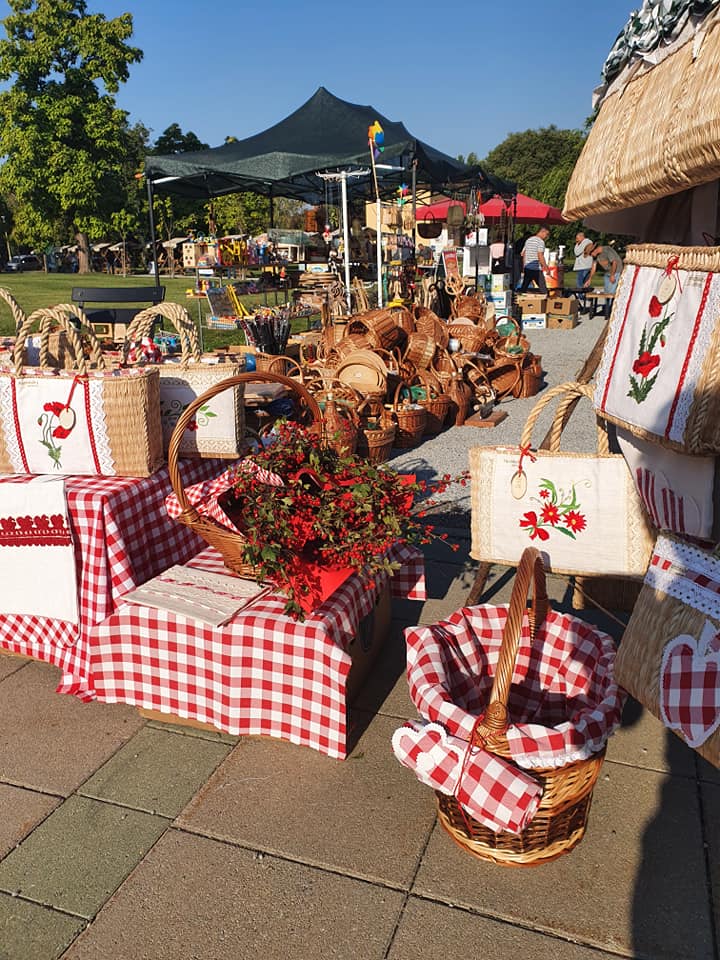
Antiques Fair, (Photo:Okusi sreće by Pavica/Facebook)
Antiques Fair - 2nd of April
The citizens of Osijek love their culture and heritage so it’s not surprising that the Antiques Fair is one the most popular events in the city. From old gramophone records to lost books and masterpieces from local unknown artists, this festivity is for everyone. Excitement as you pass by a sea of stalls that potentially contain a lost “treasure”? It is guaranteed only at the Osijek Antique Fair that is usually held on the first Saturday every month in the Old Town of the city - Tvrđa. However, the next Antique Fair will be held in King Držislav Park near the famous urban statue The Shell (Školjka) on the 2nd of April. The Park is located just across from Tvrđa, so it is not hard to find it. You can check for more here.
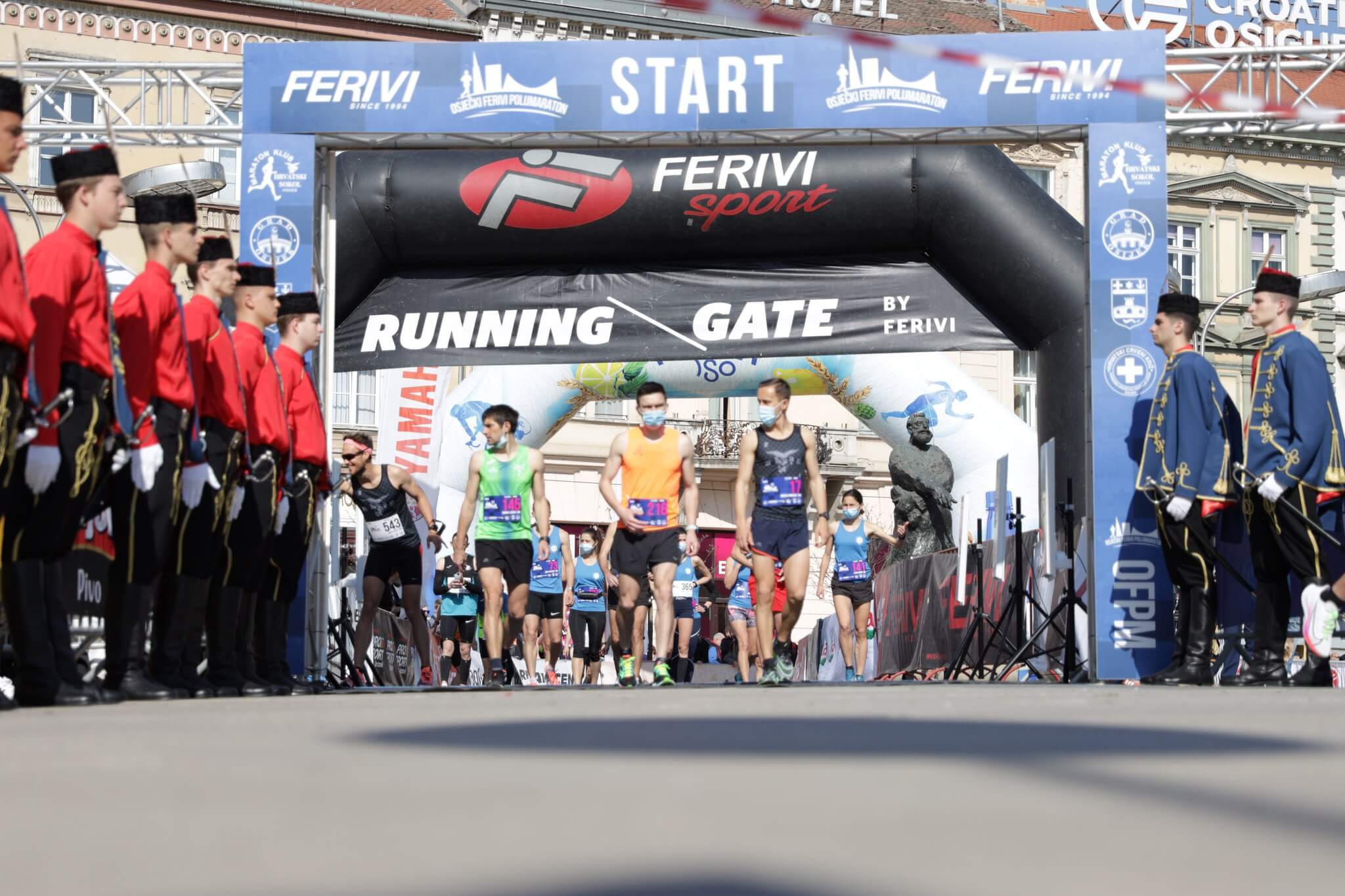
Osijek Ferivi Half Marathon (Photo Osječki Ferivi Polumaraton/Facebook)
18th Osijek Ferivi Half marathon - 9th of April 2022
This event, as the name suggests, will take place in Osijek, with four different races included: a half marathon (21.1 km), relay (3 x 7 km), citizens’ race (5 km), and a race for the youngest - children. These events will be accompanied by a music festival, instrumental, dance, and singing groups with a goal to entertain the visitors and competitors. Since its foundation, Osijek Ferivi Half Marathon has had an increase in the number of participants every single year and it’s becoming one of the biggest sporting events in Osijek and its surroundings. If you’re interested, the application is still open for everyone - it doesn’t matter if you’re a professional or casual, everyone is welcome!
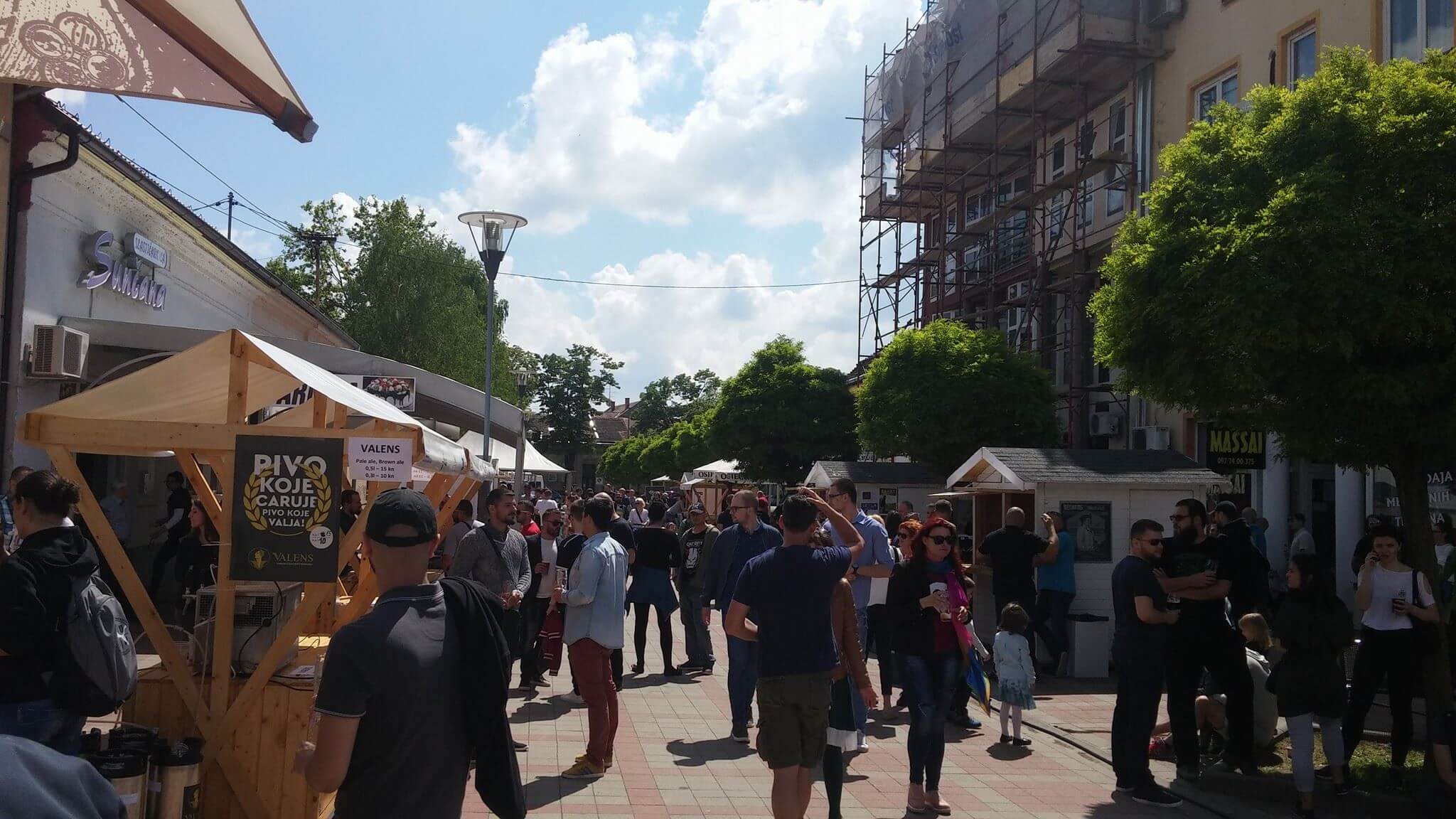
Craft Beer Festival in Osijek (Photo: Osijek CRAFT BEER Festival/Facebook)
Craft Beer Festival - sometime in May (to be determined)
How can Spring pass in Osijek without an event for beer lovers? In the last decades, Osijek has become a center for beer connoisseurs, not only in Eastern Slavonia but for beer enthusiasts all over Croatia. This fact is not surprising at all if we take into account that Osijek is also a center of multiple small breweries that produce various types of beers which have become iconic for this part of Croatia. Craft Beer Festival has been held last year during June but this year it’s probably coming back to its original date in May. We still don’t know the exact date. Nevertheless, the event will come back to the famous so-called “beer street” - Sun Street (Sunčana Ulica). For updates check their Facebook page.
If you’re interested in breweries in Osijek, check an article from our intern Toni.
After Osijek, we go further East and present cities of Vinkovci and Vukovar. Two historical Slavonian cities have a lot to offer with the support of surrounding small towns and their own events that enrich the lives of locals in Vukovar - Srijem County.

Flower Festival in Vukovar (Photo: Miroslav Slafhauzer/Turistička zajednica grada Vukovara)
Flower Festival - end of the April
Flower Festivals are a common event in Slavonia (we already had one in Osijek during Women’s Day). At the end of April every year, a Flower Festival is held in the center of Vukovar which brings together local and regional plant growers, florists, arrangers, related craftsmen, and lovers of flowers and ornamental plants. The Fair has sort of an exhibition and sales character which gives a completely different, colorful, and warmer look to the center of Vukovar. This event is also an overture for marking City Day.
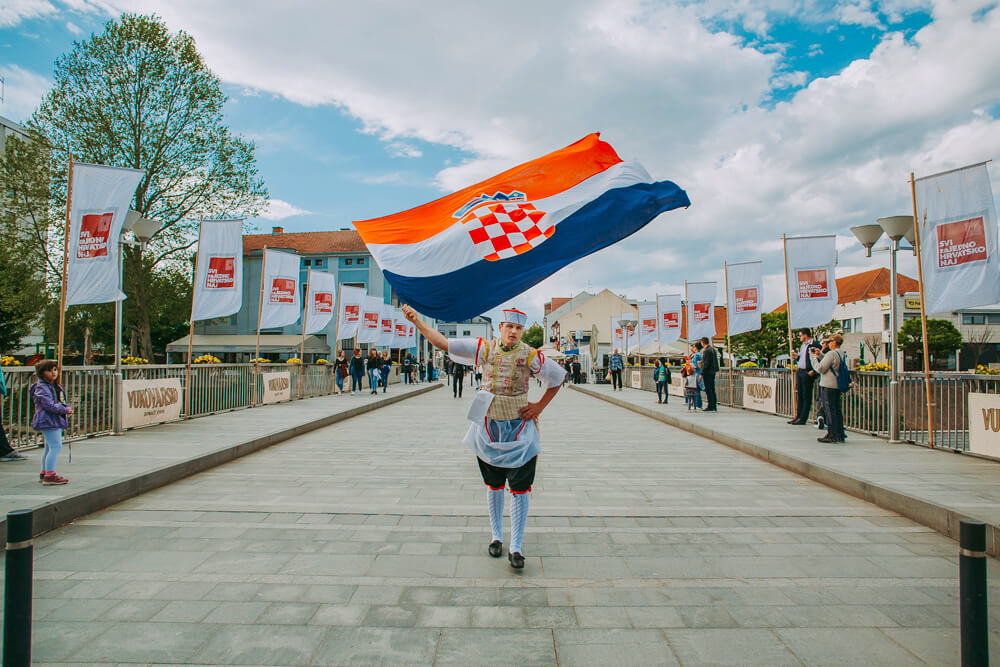
Svi zaJedno Hrvatsko Naj Festival in 2019 (Photo: svizajedno.eu/Galerija)
Svi zaJedno hrvatsko naj - cultural and tourist event - part of Vukovar City Day, 3rd of May
This festival is fairly new - it was firstly held in 2018, as a part of the European Year of Cultural Heritage. Its uniqueness lies in the fact that it is the first Croatian festival to present protected Croatian intangible cultural heritage on the national and UNESCO list with the most attractive tourist events, attractions, and destinations from all over Croatia. During the event, visitors have a chance of exploring various manifestations held all over Croatia by tasting autochthonous Croatian dishes and enjoying the offer of the best Croatian wines. Of course, what would be a Slavonian event without traditional music and dance groups? For more details, you can check their website.
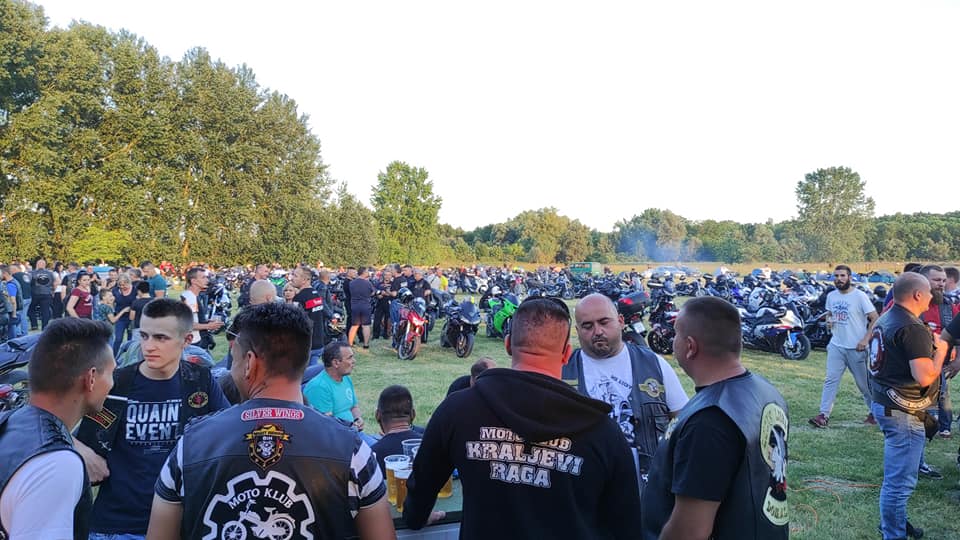
"Motorijada" in 2021 (Moto Klub Županja/Facebook)
Motorijada by Moto Club Županja - 10th of April
Motorijada (Moto Race) is an event that is organized by Moto Clubs all over Croatia. Motorcycle enthusiasts organize these events to promote, among other things, motorsports and use this opportunity to meet with their fellow motorcycle buddies. This April, Moto Club Županja is organizing the 16th Opening of Moto Season of Vukovar - Srijem County with the aim of drawing the attention of other road users to the presence and safety of motorcyclists in the traffic. They will start their tour in the village Rajevo Selo and go through multiple towns in Vukovar - Srijem County with the ending in the host city - Županja. Everyone is invited and if you’re a motorcycle enthusiast or just love looking at the motors, this is a great event to visit. For more information, check their Facebook page.

Logo of the Festival (photo: Festival Glumca/Facebook)
Actor’s Festival - all cities of Vukovar - Srijem County, 13 - 22 May
The festival was founded in 1994 by the Croatian Society of Dramatic Artists and Vukovar - Srijem County and it is the only festival in Croatia dedicated to the actor and their artistic work. Today, this event has grown into a festival that brings chamber and large ensemble performances to the audience. If you’re interested in the festival full of character, good acting, acting personality, talent, and originality, visit Vukovar - Srijem County from 13th to 22nd May this year. Every city will have its appropriate events surrounding this festival. For more, check their official website.
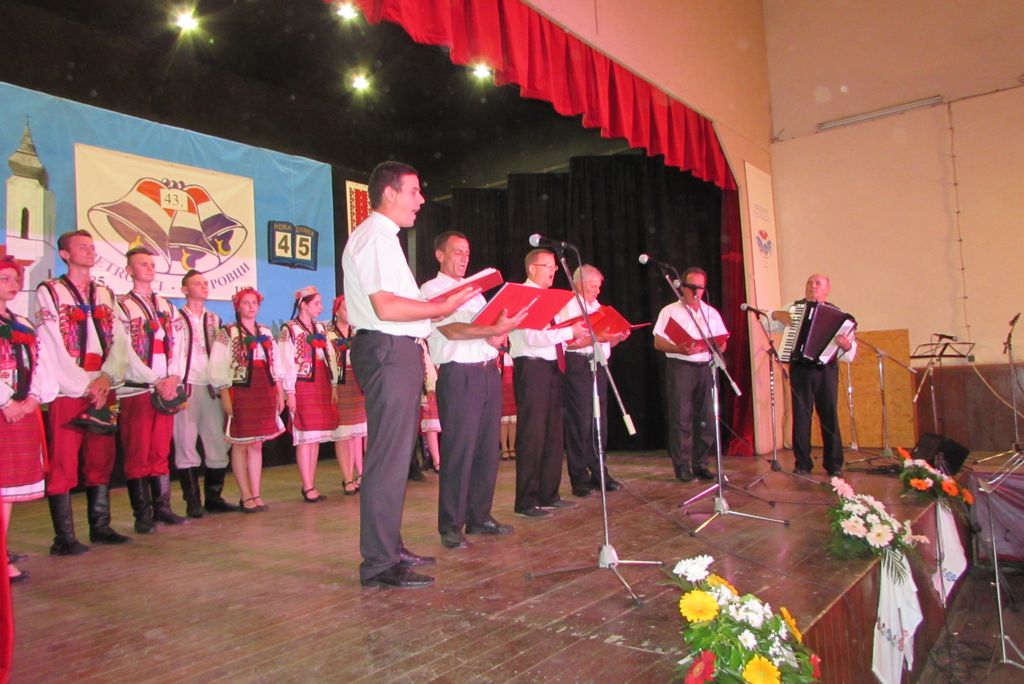
Petrovačko Zvono event few years ago (photo: savezrusina.hr)
Petrovačko Zvono - sometime in June, 49th edition
Rusyns are a national minority in Croatia with most of the residents residing in the village of Petrovci, which is located near Vukovar. Tradition, heritage, and constant maintenance of their culture for more than 40 years made this event one the most important in Vukovar - Srijem County. Rusyns from all over Croatia and other countries, visit Petrovci to connect to their fellow Rusyn people. They have a strong connection to Ukraine and their people, so if you’re nearby, visit this event, learn about the traditions of the people who’ve chosen Croatia as their home, and enjoy Petrovačko Zvono and its celebration of their heritage. For more details, you can visit their website here.
This is it for now. There are a lot more events that need mentioning, however, this article won’t be enough. TCN will bring you stories from some of these events and part two of places to visit in Eastern Slavonia is already on the way. Stay tuned!
Make sure to check out our dedicated travel section.
Hidden Village of Progress: Ivankovo - Great Example of Slavonia Full of Life
January 25, 2022 - There are many obstacles the Slavonia region faced in the last two decades, but one of the most prominent ones is the emigration of young people who do not see a future for them here. However, one particular village in the eastern interfluve of the Drava and Sava rivers in Vukovar-Srijem County stood out from the rest. Meet Ivankovo.
Ivankovo is located in Vukovar-Srijem County, west of the historical city of Vinkovci, along a busy road that has passed through that area since prehistoric times. The design reminds of a typical traditional Slavonian village; the houses are located on long narrow plots, built on a regulation line, and the background is used for agricultural purposes. In addition, there are villages Prkovci and Retkovci, which are also part of the Ivankovo Municipality. Furthermore, its geographical and traffic location connects cities like Đakovo, Osijek, Vinkovci, Vukovar. Also, the motorway A3 Bregana - Lipovac, industrial track, airport Klisa, the port of Vukovar, and neighbouring municipalities Vođinci, Stari Mikanovci, Andrijaševci, Cerna, and Jarmina. Historically, the municipality of Ivankovo was always highly populated (unusual for villages in Eastern Croatia) with, according to the 2011 census, 6,194 residents in Ivankovo, 1,263 residents in village Retkovci and 549 residents in Prkovci. However, the 2021 census showed that the emigration of people, especially young people, did not bypass Ivankovo. Only Vukovar-Srijem County has 19 percent fewer people than ten years prior, with just Ivankovo losing 1,091 residents. These devastating numbers only show how much this part of the country suffered since the Homeland War, and the possible potential Eastern Croatia can offer was neglected for decades. Recently, however, things started to change.
Croatia joined the European Union on the 1st of July 2013 and opened its borders to new opportunities, which was partly a curse if we consider the emigration, but Euro funds all of a sudden became available and small communities and districts like Ivankovo saw the opportunity to use its resources to develop their infrastructure. After the change of the government in 2017, hard work needed to begin. One of the first obstacles elected officials had to face were decrepit institution buildings (school, kindergarten, fire station), sacral objects, financial transactions pointlessly directed at projects that did not make any sense, engaging locals in public events, and keeping young residents and their potential families in the district of Ivankovo. This was only a drop in the ocean, but with the available European funds and fixes in municipalities' budgets, projects of developing neglected villages finally started.
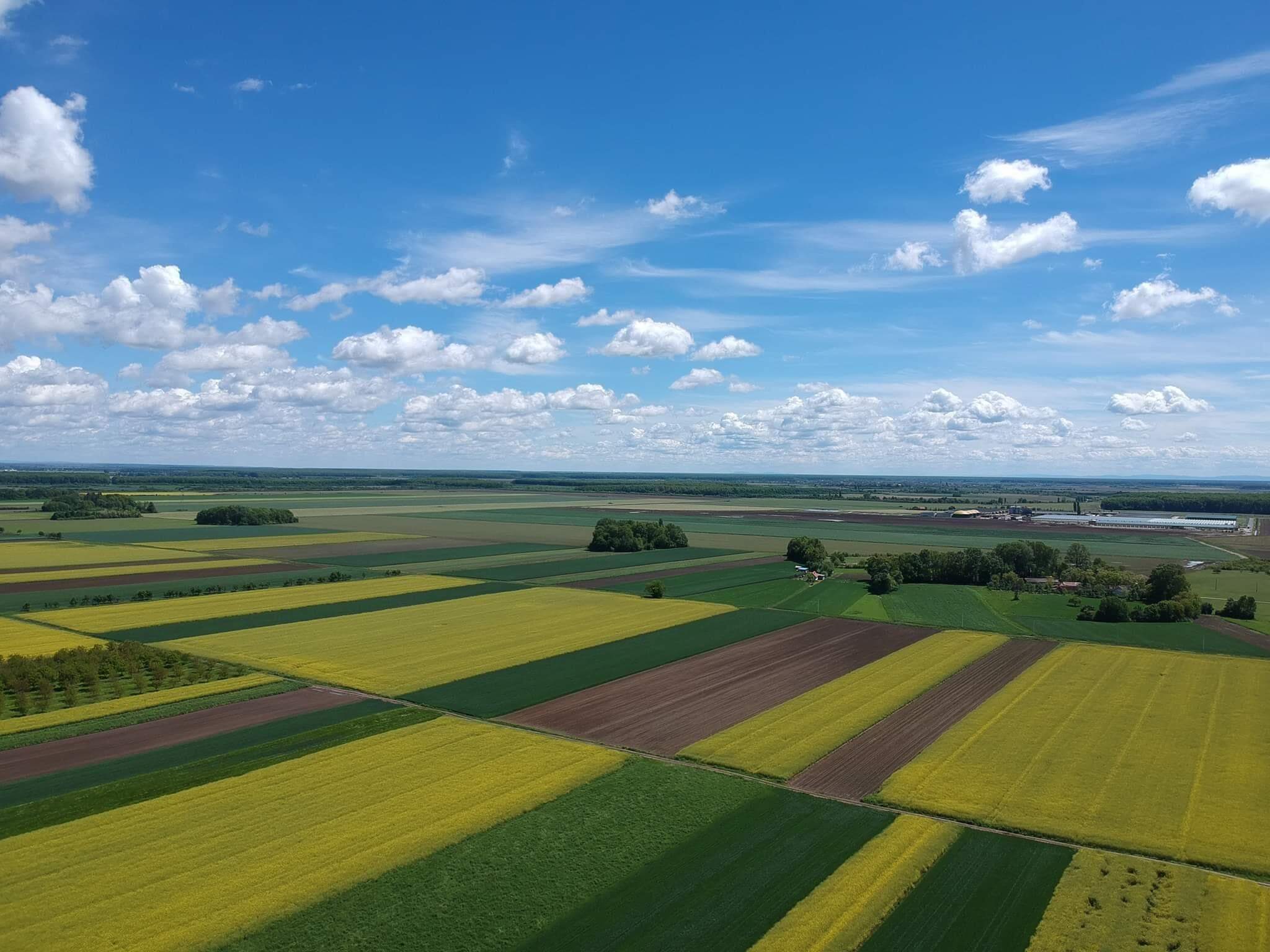
foto: Facebook/Ivankovo.info
The first big project happened at the Industrial Zone Ivankovo, which was, after many years, finally put into function and allowed local entrepreneurs to invest and develop their own establishments. This encouraged employment, of which 70 percent needed to be from the Municipality of Ivankovo.
Local utilities also needed a massive upgrade, so a communal society was formed and today employs 26 people from the Municipality, who take care of the village’s environment every day. Public spaces like children’s playgrounds, parks, and other areas were built and renovated. Furthermore, part of the Revitalization plan included planting 300 trees across the Municipality. The roads have been renovated, built where needed, and the sewer system finally connected with households across the villages of Ivankovo, Prkovci, and Retkovci. Waste management is still a huge problem across Croatia but the local government of Ivankovo, with the help of EU funds, enabled the construction of a recycling yard which highlights the need for sorting and recycling the waste. 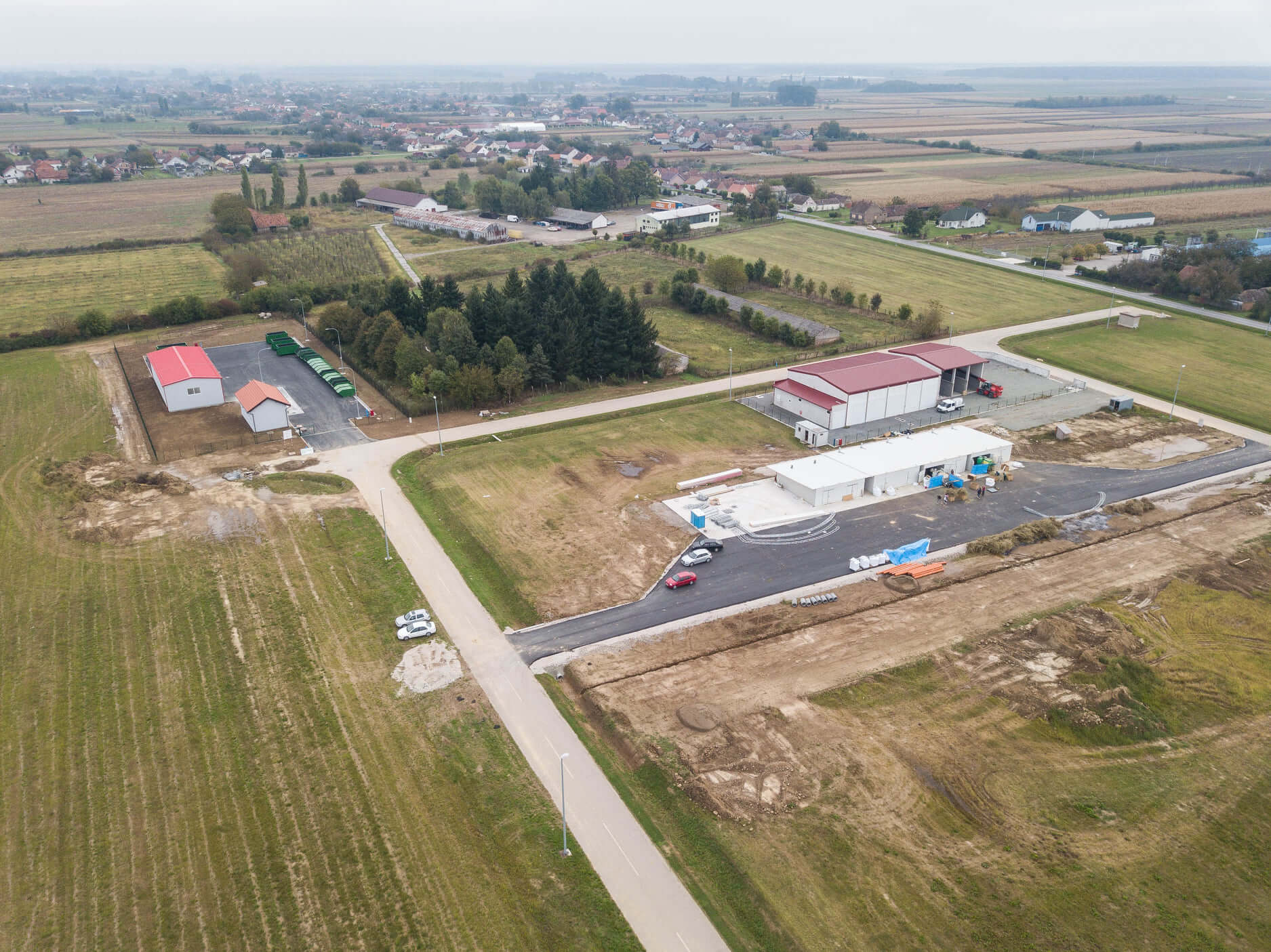
Industrial Zone Ivankovo, foto: Facebook/Marko Miličević - načelnik Općine Ivankovo
Social incentives: co-financing the purchase of houses for young families, infant benefits, free preschool educations, new kindergarten buildings, free student transportation, student scholarships, and other perks of the demographic policy all came into fruition since 2017, and it helped residents of Ivankovo immensely.
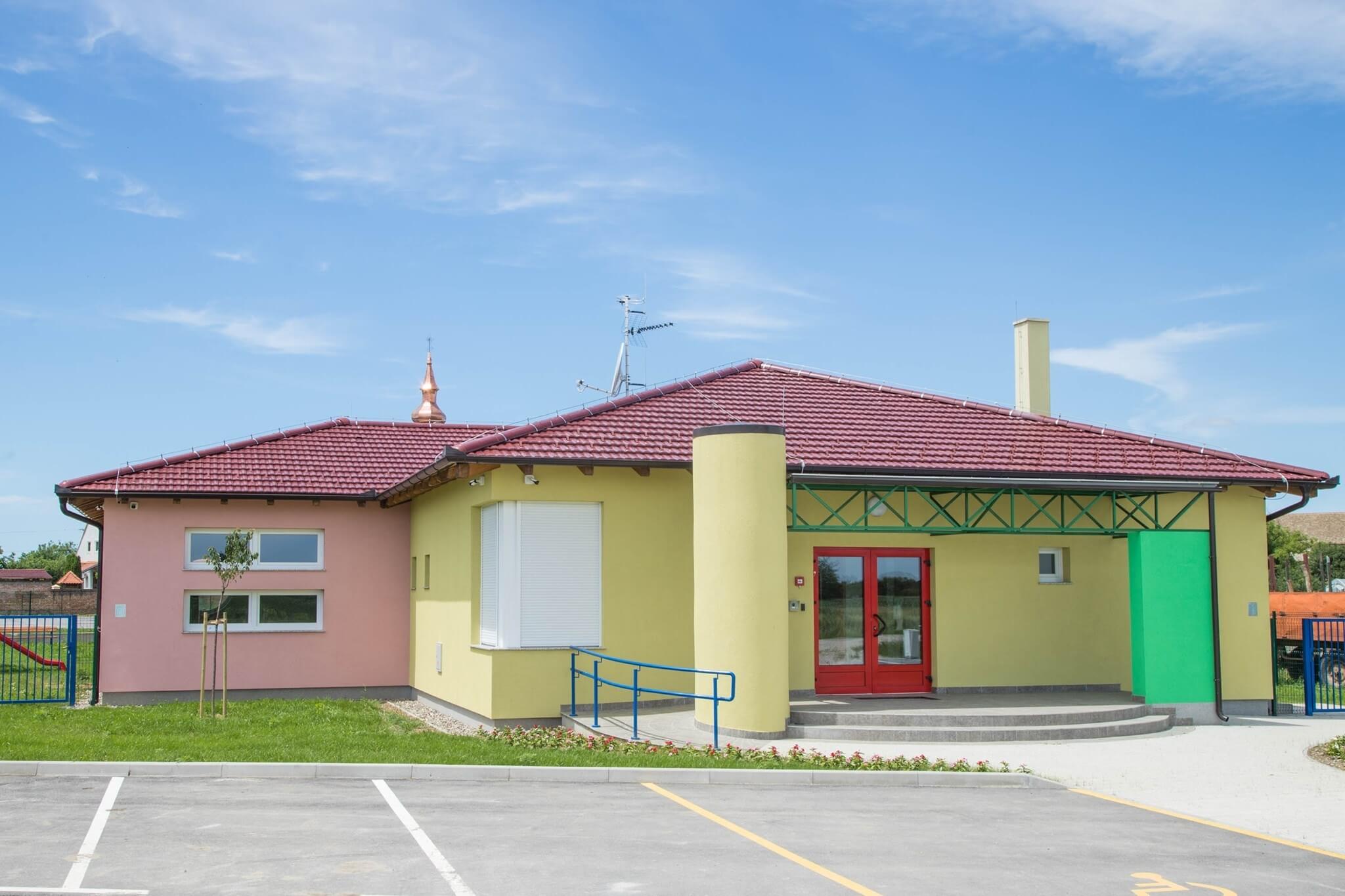
Newly Built Kindergarten Ivankovo, foto: Facebook/Dječji vrtić Ivankovo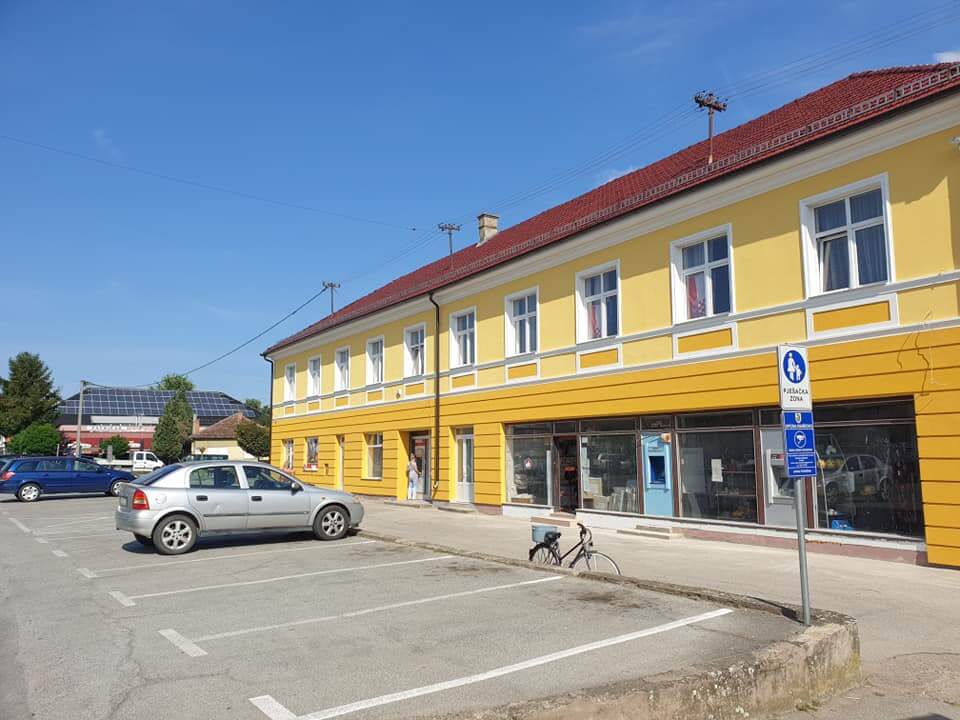
Renovated old government building, foto: Facebook/Marko Miličević - načelnik Općine Ivankovo
This is only a drop in the ocean that shows if people put in a little effort and genuinely care about the development of the community in which they reside, Slavonia can truly be better. When asked about these achievements and progress the Municipality went through the last few years, Mayor Marko Miličević says that “this is only the beginning. It was hard, we had to fix a lot of issues that were rooted here for years, but with the help of my colleagues and finding resources to finance our goals of development of this region, we started something that we can only continue to build on.”
He continues: “The most important part was listening to people, getting to know them again and recognizing their needs because before they weren’t being listened to.”
Plans seem ambitious as well: “This Municipality has so much potential and highly educated people, with more than 100 faculty students every year who are studying economics, IT, electrical engineering and computing, food technology, medicine, etc., which are all the fields that are the future of this country.” he says.
Furthermore: “We have numerous development projects in works that we want to be finished in the next few years: further development of Entrepreneurial Zone Ivankovo, a tourist, sports and recreation center, a retirement home, catering and tourist zone, etc.
Mayor Miličević ends on a hopeful note: “We have achieved the future of development in the Municipality of Ivankovo, and we plan to continue it.” 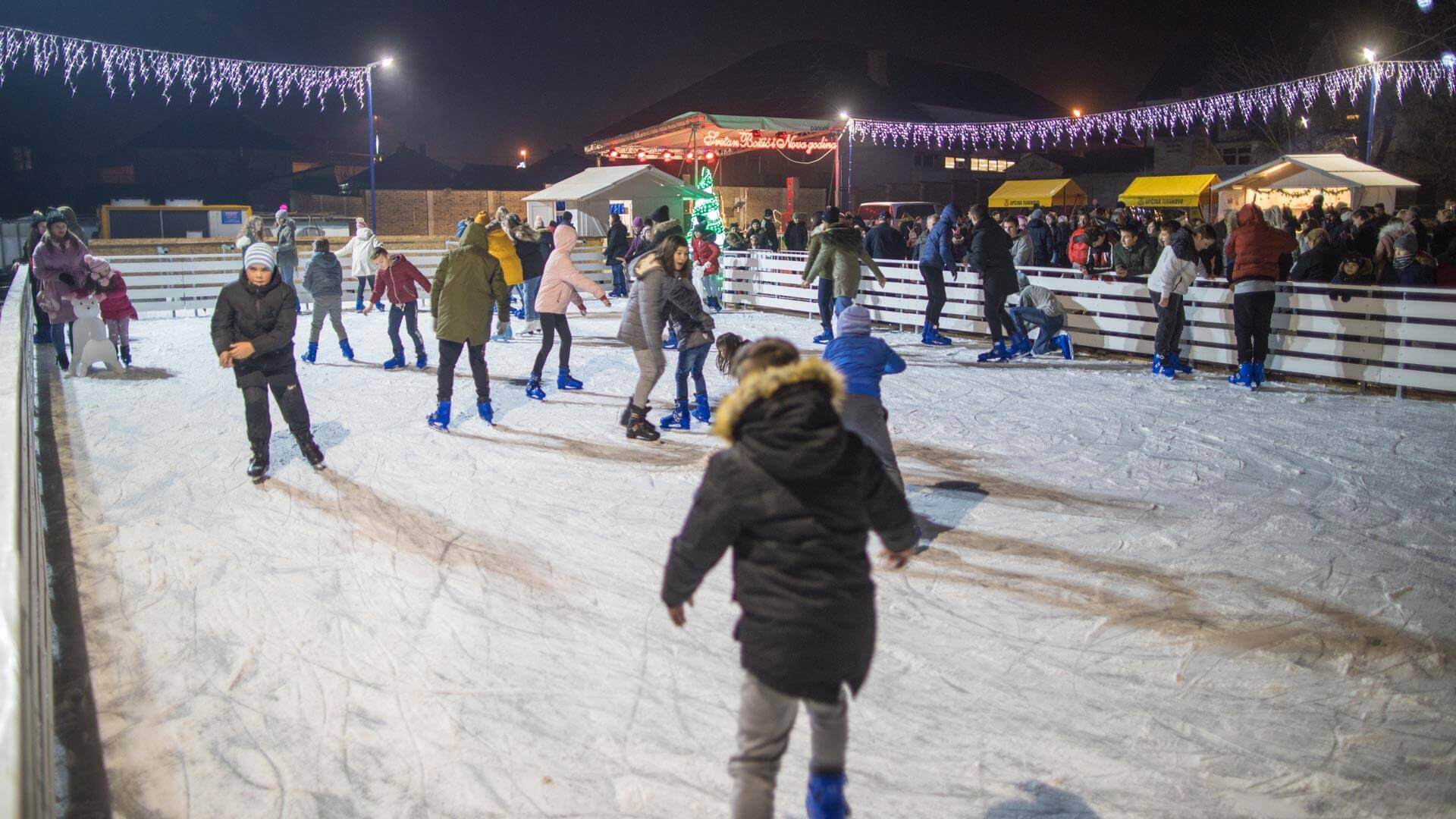
Winter Joys During Christmas Holidays, foto: Facebook/Marko Miličević - načelnik Općine Ivankovo
Sports recreation, social events, concerts, the inclusion of young people in said events, and more only shows that the district of Ivankovo finally livened up and restored a little bit of life that resided here 30 - 40 years ago. Multiple “parasites” wormed themselves in the core of Slavonia and slowly but surely exhausted the region to the limit. People settled for what was enough for them, for what was given to them, and some of them left because they couldn’t see their future here. Generations of high schoolers heard every day that there isn’t a place for them here in Slavonia, that there are many people like them who never found themselves here and had to leave because of it, and that they need to leave as well.
The hope for Slavonians has been stepped on for years, but the current changes slowly every day. Osijek started it, Vukovar and Vinkovci are following it. Still, a village like Ivankovo can only be an example of how much power its residents have and use their potential to make, how one former foreign politician said, Slavonia great again.
For more, check out our dedicatedlifestyle section.


